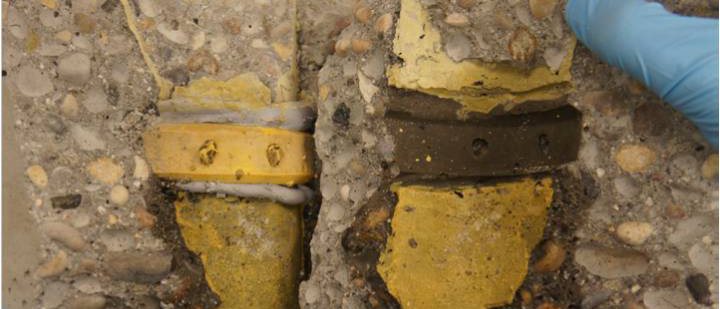Not all swelling waterstops perform the same.
Construction joints are one of the weakest points of a waterproof structure. They are typically one of the first locations for the infiltration of water to occur and cause deterioration to the concrete and surrounding reinforcement. Bentonite clay-based waterstops are traditionally used within the
joints, but their ability to swell is severely hindered when exposed to anything other than pure water, leaving the concrete structure at risk.
Swelling of bentonite clays is a two stage process:
- Crystalline swelling; a short-term expansion.
- Diffuse double-layer swelling; a long-term swelling.
The diffuse double-layer swelling dominates the final swell property of bentonite clay, providing its maximum swell potential. Ions present in sea water or contaminated ground water, however, inhibit the ability for swelling to occur past the first stage. This failure to progress to the second stage of swelling is crucial as it makes up a large portion of the bentonite waterstop’s swelling ability. If it cannot progress through to the second stage of swelling, the construction joint will be at a greater risk of failure.
Another important factor to keep in mind is that most, if not all water trying to bypass the joints of concrete structures are not pure, but instead contain a variety of ions and contaminants. When considering bentonite waterstops as a method of jointing, it should be expected that a significantly reduced amount of expanding may occur. Bentonite waterstops are also prone to deterioration after wet and dry cycles which occur frequently in construction joints. These limitations of bentonite waterstops become an issue through the service life of a building if its lack of swelling performance does not result in the failure first.
Are there better waterstop options other than bentonite for joint protection? Short answer, yes!
Krytonite Swelling Waterstop, on the other hand, is not composed of bentonite clay, it is made from a unique synthetic rubber. This technology allows it to swell up to 4 times more than conventional bentonite swelling waterstops, producing a swelling ability to withstand extreme hydrostatic pressure. Krytonite’s immense swelling ability benefits it by allowing it to fill in voids from poor consolidation around the construction joint area.
Further, the synthetic rubber technology allows Krytonite to perform better than bentonite waterstops in conditions of high ions concentration and contamination, such as sea water or contaminated soils. Even when tested beside non-bentonite waterstops, Krytonite is able to swell and outperform in a variety of conditions. Krytonite is a cohesive material which will not deteriorate in wet and dry cycles, performing through the service-life of the building.
The below graphs highlight Krytonite's ability to swell compared against bentonite. The graphs show the swelling capacity of Krytonite against benotonite waterstop in tap water, contaminated water, and salt water. In all three tests, Krytonite outperformed bentonite by a large margin.
This durable waterstop performs better than other waterstops, particularly bentonite waterstops, mitigating the risk of failure at the construction joint.
For more information on Krytonite, please visit our website.








